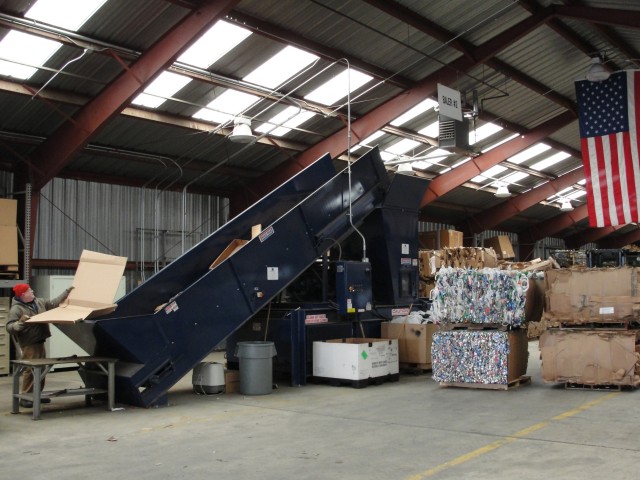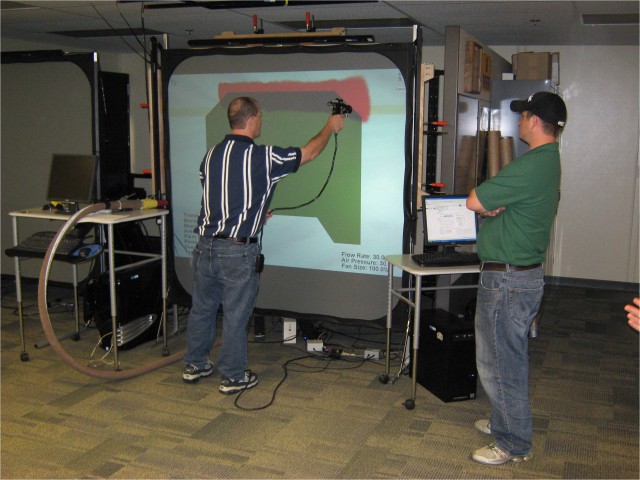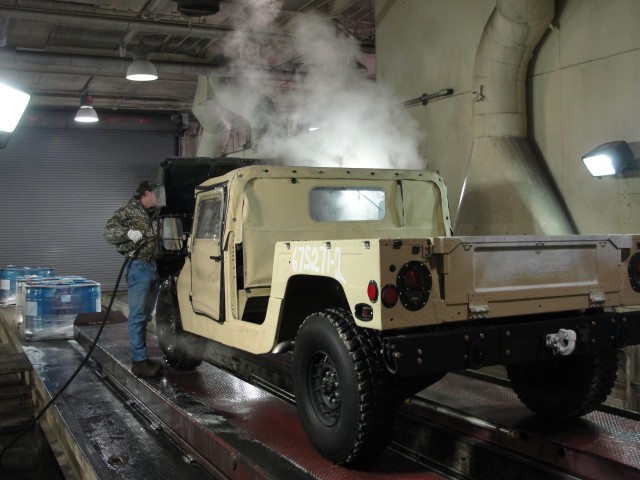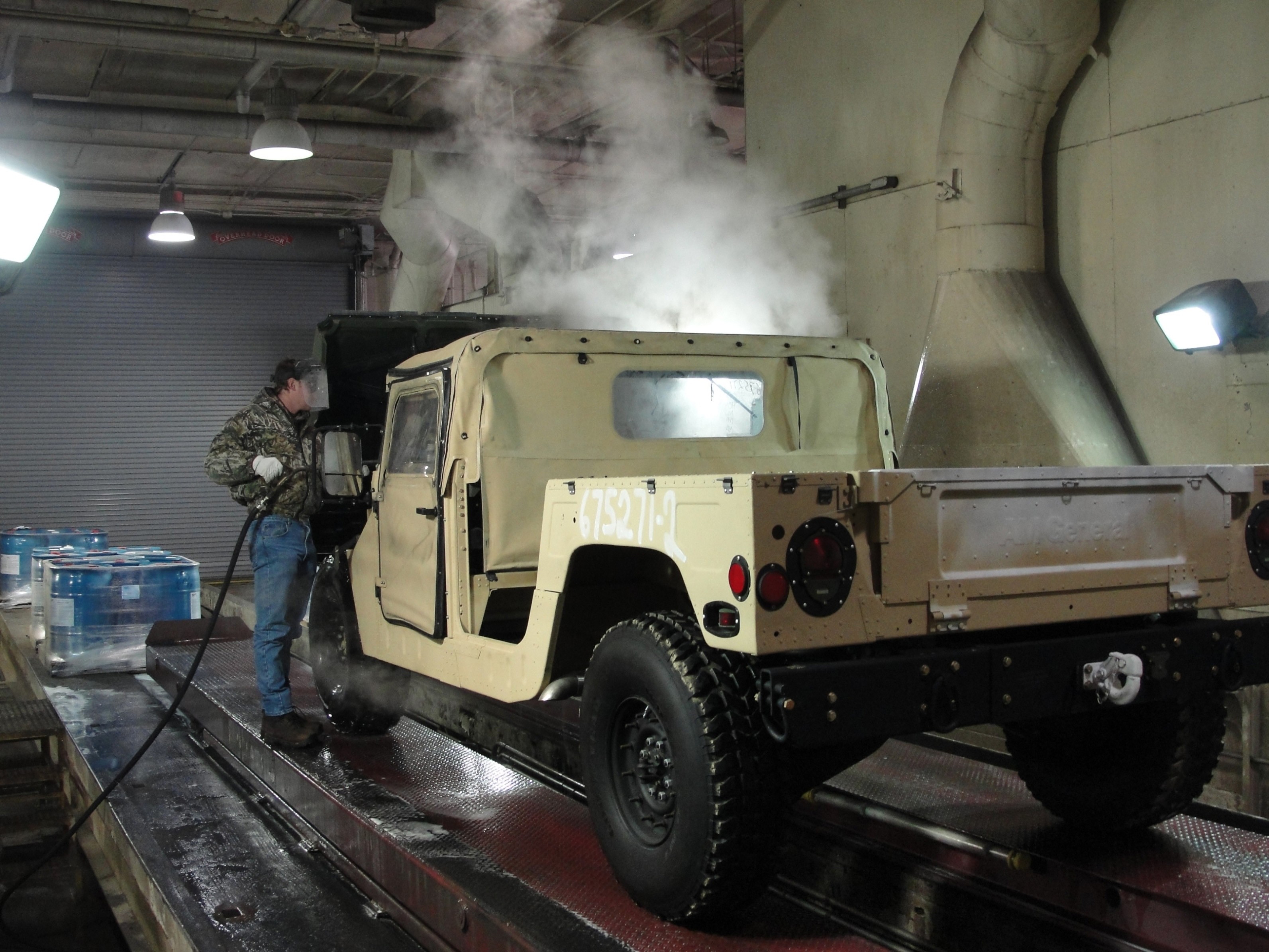ABERDEEN PROVING GROUND, Md. -- The Letterkenny Army Depot (LEAD) won the FY 2009 Secretary of the Army award for industrial sustainability on an installation.
As the center of industrial and technical excellence for air defense and tactical missile systems, LEAD's primary mission is to provide the U.S. Army and other services with worldwide, reliable, responsive and cost-effective depot-level maintenance. Additionally, LEAD provides field support, systems integration and product support integration for weapon systems, components and supplementary equipment to ensure the readiness, sustainability and safety in the full spectrum of operational environments.
LEAD's sustainability plan guides the depot's environmental goals for the next 25 years and beyond. LEAD's plan consists of three overarching goals: water conservation, energy conservation and solid waste reduction. Under the plan, by the year 2033, the depot will subsist solely on renewable energy and self-sustaining water and other natural resources with no waste discharge into the local landfill. The depot's sustainability plan is an integral part of the commander's strategic objective to become the Army's premier "Sustainable Green Depot."
To achieve its sustainability goals, the depot must uncover and track what had previously been hidden energy and water use and their associated costs. The depot has had metered water use at all of its buildings since the 1990s, and all new construction has also been metered. The depot has installed an additional 26 electric meters and five gas meters in 12 buildings, with a monitoring system to track and shift the demand for electricity to off-peak, lower cost hours. The advanced metering system tracks 75 percent of the electricity used at the depot. As of September 2009, the depot had 88 meters tracking 90 percent of electric costs and is on track to meet the Army's goal of having all buildings metered by the end of September 2013.
"Letterkenny developed the most comprehensive sustainability program in the Army by installing meters to monitor electricity consumption, driving electric vehicles, adding solar panels and geothermal heating, replacing inefficient boilers and making a host of other improvements. Letterkenny is a model for sustainability," said Tom Lillie, the consulting fellow of the Army Environmental Policy Institute.
The depot continuously feeds its pipeline of long-term sustainability projects. For example, in the last two years the depot has initiated steps toward installing passive solar and geothermal heating and cooling using Energy Conservation Investment Program funding. Additionally, the depot has partnered with the National Defense Center for Energy and Environment to demonstrate emerging technologies in waste-to-energy conversion and methane gas recovery.
An independent panel of judges made up of professionals from federal, state and Army organizations recommended LEAD for the award. The Secretary of the Army Environmental Awards represent the highest honor in the field of environmental science and sustainability conferred by the Army.
Deputy Assistant Secretary of the Army for the Environment, Safety and Occupational Health Tad Davis recognized LEAD and the winners of the other eight categories as the best examples of how environmental stewardship and sustainability play a crucial role in the Army's mission readiness.
"The Army recognizes successes that demonstrate mission-driven solutions that protect the environment at installations here and overseas. Whatever we do needs to revolve around supporting the mission, taking care of our Soldiers, civilians, and Families," said Davis. "In simplistic terms the Army, our Army, your Army - is building green, buying green and going green. These winning environmental programs make the Army sustainable thereby impacting generations to come."
For details about the Secretary of the Army Environmental Award recipients, visit the U.S. Army Environmental Command's Web site at <a href="http://aec.army.mil/usaec/newsroom/awards00.html">http://aec.army.mil/usaec/newsroom/awards00.html</a>.








Social Sharing